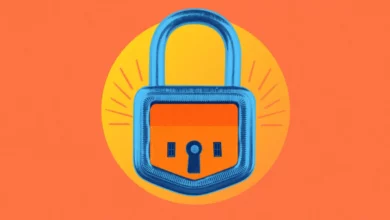
Every other day we get news of one individual or another becoming a victim of a cyber-attack or online scam. It’s become so common. From the cleverly designed phishing emails to the appealing bait of get-rich-quick ploys, the various ways these exploitations can happen are immeasurable. However, with wisdom and caution, one can safely navigate the dangerous waters without a scratch.
-
Understanding the Anatomy of Deception
At the heart of every online scam lies the art of manipulation. Scammers take advantage of human psychology, and it is through emotions such as fear, greed, and curiosity that they bait victims into their traps. They use excessive stimulation by assuring us of the huge wealth with minimum effort or by imposing consequences in case the actions are delayed. Such techniques exploit our own natural weaknesses.
Take a look at, for instance, phishing, a type of fraud whereby malicious emails are shown to have documents from reputed entities like banks or governmental agencies. These emails usually tempt their recipients to reveal confidential data or to visit scam websites provided under the mask of urgency or importance. They attempt to create a congenial environment in order to remove doubts of the victims, thus making it easy to deceive them.
-
Spotting the Red Flags
Vigilance is the shield against online frauds. Identifying the subtle cues that may indicate deceit enables people to foil the manipulation attempts before they worsen into full-blown crises. Some common red flags to watch out for include:
- Unsolicited Communications: Be on alert for unsolicited emails, texts, or phone calls asking to share your personal details or rushing you to take action, especially if they come from unknown senders.
- Offers that Are Too Good To Be True: Watch out for offers that require you to put a minimal effort and promise you overwhelming returns. Keep note of the adage, ‘if it looks like a duck, walks like a duck and quacks like a duck, it’s probably a duck’.
- Urgency and Pressure Tactics: The fraudsters usually make use of strategies which induce fear by driving people into taking action rashly without thinking properly about it. Try to avoid knee-jerk reactions and keep a cool head. Take some time to evaluate the situation rationally before making any important decisions.
- Poor Grammar and Spelling: One of the telltale signs of phishing emails or scam websites is that they contain obvious grammar, spelling, or layout mistakes. Those mistakes are red flags for illegitimacy.
- Requests for Payment or Personal Information: Trustworthy organizations will not ask you to submit personal or credit card information via e-mail or messages, and also will not ask you to make payments in advance. Please be very mindful when asked for the same and never offer such details in unsolicited communication.
-
Tips to Prevent Online Scams
By being on the offensive and employing robust measures, people can significantly reduce the chances of becoming victims of online frauds. Here are some essential tips to fortify your defenses:
-
Use Antivirus and Don’t Forget to Update Your Software
Secure your devices from malware, spyware, and other malicious programs using the best security software solutions that you can find. Bitdefender offers a range of products that can be used on multiple devices and managed from a single account. Make sure you scan your devices regularly for potential threats and avoid downloading any software or files from sources you don’t trust.
Additionally, make sure that your operating system, antivirus software, web browser, and other programs stay up-to-date with the security patches. Outdated software have vulnerabilities that can be used by scammers to get to your device or your personal information without any authorization.
-
Exercise Caution When Clicking Links
Be cautious when clicking on links in emails, social media posts, or text messages, especially if they appear suspicious or originate from unknown sources. If in doubt, you can use the Bitdefender scam detector tool to check for any scams.
Before sharing confidential data or making online purchases, ensure the website is secure by checking for HTTPS encryption and a padlock on the address bar. Refrain from submitting any sensitive personal or financial data on unsecured websites as a precaution since unauthorized third parties could intercept your confidential data if it’s not encrypted.
-
Use Strong Passwords, and Enable Two-Factor Authentication
Secure your online accounts by creating passwords that contain a combination of letters, numbers, and special characters. They should not be easy to guess nor too simple. Do not reuse one password on many accounts because if you experience a breach in a platform, you might compromise all passwords. Consider using a good password manager to create and manage your passwords safely.
Give an extra security layer to your accounts by enabling two-factor authentication (2FA) wherever you can. This additional step, normally, makes use of a code sent to your mobile or generated by authenticator apps, and raises barriers against potential unauthorized access even if a password is compromised.
While the internet is opening up many possibilities and seems to be a place full of infinite opportunities, there also exists a menace of online scams that haunt us all. Understanding the tricks that fraudsters use, watching out for the signs of deception, and gaining confidence through education is an effective way of keeping your digital identities and personal information safe. So, stay vigilant, stay safe!



